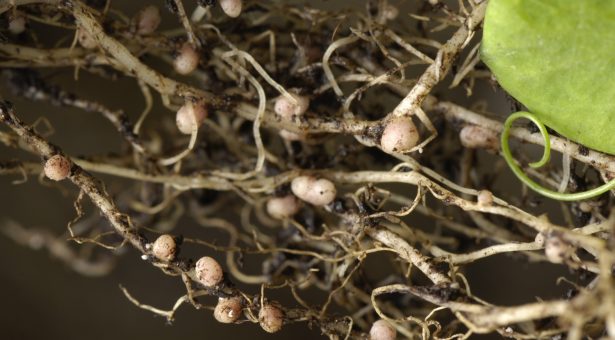Introducing Professor Mark Banfield; Plant Health programme lead

2020 is the International Year for Plant Health, so we caught up with the lead of our Plant Health research programme, Professor Mark Banfield.
“The Plant Health programme I lead is a cross institute initiative between the John Innes Centre and The Sainsbury Laboratory addressing global challenges in agriculture with the aim of producing more food, with fewer inputs, on less land.
We’re also concerned with the damage caused by plant disease in the natural environment.
We want to understand how plants and microbes communicate in the context of nutrition, disease, and disease management. If we understand what is happening and why, then opportunities can arise to apply that knowledge to help solve global problems.
We get up in the morning and come to work to understand problems and to seek answers to questions like;
- How we can engineer plants to have better symbioses with microbes? or
- How can we engineer plants to better resist diseases in agriculture and the natural environment?
When you think about climate change, most people tend to think about cars and air travel as the big problems. But if we are going to decarbonise whole economies, we need to prioritise agriculture as well. We need to feed a growing population and reduce the carbon footprint of agriculture, which is a truly global challenge.
The use of nitrogen-based fertilisers is a good example of something which has a massive carbon footprint. To lower the impact of agriculture on our climate, we need to reduce the amount of fertiliser that is put into our soils around the world.
Added to this, plants can only use a specific amount of nitrogen, which means if too much nitrogen-based fertiliser is added, it can’t be used or stored by the plants, so it runs off the soil and can poison rivers and streams.
Nitrogen is essential to plant growth, and without a source of nitrogen a crop will not provide a good yield for the farmer. So, we need nitrogen, but we also need to lower the amount of fertiliser added to the soil.
To achieve this, we need to find ways in which plants can better access the nitrogen that’s already in their environment, and the best way to do that is to engineer plants to fix their own nitrogen from the atmosphere.
Nature has already found ways of doing this. Plants interact with microbes in their roots, this symbiotic relationship is found in many legumes, including peas and beans. The bacteria fix nitrogen from the atmosphere and provide nutrients to the plant.
A further benefit of reducing the need for fertilisers would be for subsistence farmers. Nitrogen fertilisers are quite expensive, so not everybody is able to access to them. If we can engineer plants that don’t require added nitrogen, crop yields can be improved for everyone, regardless of wealth.
Understanding plant nutrition, and how knowledge can be applied in agriculture, is only one aspect the Plant Health programme is working towards, the other is looking at plant disease. In agriculture, many plant diseases are controlled by spraying chemicals, such as fungicides and pesticides, which are costly and can be harmful to the environment. In the long-term, their use is not sustainable.
Plants, like humans and animals, get diseases. Unlike humans however, plants can’t move away from a potential source of infection and they don’t have an adaptive immune system, so they need an alternative way to respond to disease.
They do this through a two-layer immune system. Firstly, they have receptors which detect signatures of invading organisms on the cell surface. Once a threat is detected, a warning system is activated, which leads to a basic immune response, such as rigidifying the cell wall to prevent penetration of organisms. In addition, chemical compounds may be secreted from the cells to repel invaders.
To combat pathogens that have evolved to sidestep this first layer of immunity, plants have evolved a second robust response mediated by intracellular receptors. This type of response is often more extreme in that it can involve localised cell death, in an attempt to restrict spread of the pathogen. Many pathogens need living tissue to proliferate. So, if the cells invaded by the pathogen die, pathogen growth can be stopped. If the pathogen doesn’t have the nutrients it needs to survive, it dies, and the plant survives.
In this way, nature has gone some way to providing us with solutions to combatting pathogens which cause huge crop yield losses around the world. If we can understand how the components of this system work, then we can use nature’s solution to help us engineer plants which can fend off diseases and limit the need to use chemical sprays to fight disease.
Essentially, what we are doing in the Plant Health programme is using scientific discoveries to improve crop yield, and protect our natural environment, by repurposing the solutions that nature has already been able to achieve through evolution, and building on these through engineering. If we can do that, we can almost future proof crops against poor nutrition and devastating pathogens.
The International Year of Plant Health 2020 is a great opportunity for us to to get out there and showcase our science to other scientists, policy makers and to the general public. It is so important that we take this opportunity because plant health is of increasing importance to our changing world.”



